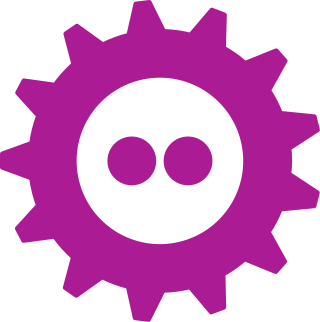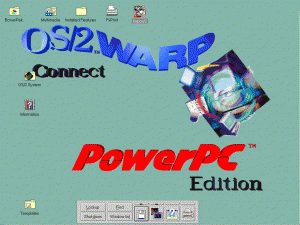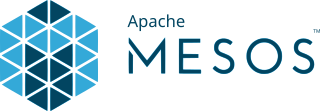Related Research Articles

PostgreSQL, also known as Postgres, is a free and open-source relational database management system (RDBMS) emphasizing extensibility and SQL compliance. PostgreSQL features transactions with atomicity, consistency, isolation, durability (ACID) properties, automatically updatable views, materialized views, triggers, foreign keys, and stored procedures. It is supported on all major operating systems, including Linux, FreeBSD, OpenBSD, macOS, and Windows, and handles a range of workloads from single machines to data warehouses or web services with many concurrent users.

Ingres Database is a proprietary SQL relational database management system intended to support large commercial and government applications.

Db2 is a family of data management products, including database servers, developed by IBM. It initially supported the relational model, but was extended to support object–relational features and non-relational structures like JSON and XML. The brand name was originally styled as DB2 until 2017, when it changed to its present form.
A database transaction symbolizes a unit of work, performed within a database management system against a database, that is treated in a coherent and reliable way independent of other transactions. A transaction generally represents any change in a database. Transactions in a database environment have two main purposes:
- To provide reliable units of work that allow correct recovery from failures and keep a database consistent even in cases of system failure. For example: when execution prematurely and unexpectedly stops in which case many operations upon a database remain uncompleted, with unclear status.
- To provide isolation between programs accessing a database concurrently. If this isolation is not provided, the programs' outcomes are possibly erroneous.

Free and Open source Software Developers' European Meeting (FOSDEM) is a non-commercial, volunteer-organized European event centered on free and open-source software development. It is aimed at developers and anyone interested in the free and open-source software movement. It aims to enable developers to meet and to promote the awareness and use of free and open-source software.

Workplace OS is IBM's ultimate operating system prototype of the 1990s. It is the product of an exploratory research program in 1991 which yielded a design called the Grand Unifying Theory of Systems (GUTS), proposing to unify the world's systems as generalized personalities cohabitating concurrently upon a universally sophisticated platform of object-oriented frameworks upon one microkernel. Developed in collaboration with Taligent and its Pink operating system imported from Apple via the AIM alliance, the ambitious Workplace OS was intended to improve software portability and maintenance costs by aggressively recruiting all operating system vendors to convert their products into Workplace OS personalities. In 1995, IBM reported that "Nearly 20 corporations, universities, and research institutes worldwide have licensed the microkernel, laying the foundation for a completely open microkernel standard." At the core of IBM's new unified strategic direction for the entire company, the project was intended also as a bellwether toward PowerPC hardware platforms, to compete with the Wintel duopoly.
K42 is a discontinued open-source research operating system (OS) for cache-coherent 64-bit multiprocessor systems. It was developed primarily at IBM Thomas J. Watson Research Center in collaboration with the University of Toronto and University of New Mexico. The main focus of this OS is to address performance and scalability issues of system software on large-scale, shared memory, non-uniform memory access (NUMA) multiprocessing computers.
In computing, a solution stack or software stack is a set of software subsystems or components needed to create a complete platform such that no additional software is needed to support applications. Applications are said to "run on" or "run on top of" the resulting platform.
Amazon Elastic Compute Cloud (EC2) is a part of Amazon.com's cloud-computing platform, Amazon Web Services (AWS), that allows users to rent virtual computers on which to run their own computer applications. EC2 encourages scalable deployment of applications by providing a web service through which a user can boot an Amazon Machine Image (AMI) to configure a virtual machine, which Amazon calls an "instance", containing any software desired. A user can create, launch, and terminate server-instances as needed, paying by the second for active servers – hence the term "elastic". EC2 provides users with control over the geographical location of instances that allows for latency optimization and high levels of redundancy. In November 2010, Amazon switched its own retail website platform to EC2 and AWS.

Michael Ralph Stonebraker is a computer scientist specializing in database systems. Through a series of academic prototypes and commercial startups, Stonebraker's research and products are central to many relational databases. He is also the founder of many database companies, including Ingres Corporation, Illustra, Paradigm4, StreamBase Systems, Tamr, Vertica and VoltDB, and served as chief technical officer of Informix. For his contributions to database research, Stonebraker received the 2014 Turing Award, often described as "the Nobel Prize for computing."

Vertica is an analytic database management software company. Vertica was founded in 2005 by the database researcher Michael Stonebraker with Andrew Palmer as the founding CEO. Ralph Breslauer and Christopher P. Lynch served as CEOs later on.
Redis is a source-available, in-memory storage, used as a distributed, in-memory key–value database, cache and message broker, with optional durability. Because it holds all data in memory and because of its design, Redis offers low-latency reads and writes, making it particularly suitable for use cases that require a cache. Redis is the most popular NoSQL database, and one of the most popular databases overall. Redis is used in companies like Twitter, Airbnb, Tinder, Yahoo, Adobe, Hulu, Amazon and OpenAI.
Amazon Relational Database Service is a distributed relational database service by Amazon Web Services (AWS). It is a web service running "in the cloud" designed to simplify the setup, operation, and scaling of a relational database for use in applications. Administration processes like patching the database software, backing up databases and enabling point-in-time recovery are managed automatically. Scaling storage and compute resources can be performed by a single API call to the AWS control plane on-demand. AWS does not offer an SSH connection to the underlying virtual machine as part of the managed service.

Juju is a free and open source application modeling tool developed by Canonical Ltd. Juju is an application management system. It was built to reduce the operation overhead of software by facilitating, deploying, configuring, scaling, integrating, and performing operational tasks on public and private cloud services along with bare-metal servers and local container-based deployments.

OpenShift is a family of containerization software products developed by Red Hat. Its flagship product is the OpenShift Container Platform — a hybrid cloud platform as a service built around Linux containers orchestrated and managed by Kubernetes on a foundation of Red Hat Enterprise Linux. The family's other products provide this platform through different environments: OKD serves as the community-driven upstream, Several deployment methods are available including self-managed, cloud native under ROSA, ARO and RHOIC on AWS, Azure, and IBM Cloud respectively, OpenShift Online as software as a service, and OpenShift Dedicated as a managed service.
NewSQL is a class of relational database management systems that seek to provide the scalability of NoSQL systems for online transaction processing (OLTP) workloads while maintaining the ACID guarantees of a traditional database system.

Apache Mesos is an open-source project to manage computer clusters. It was developed at the University of California, Berkeley.

Genode is a free and open-source software operating system (OS) framework consisting of a microkernel abstraction layer and a set of user space components. The framework is notable as one of the few open-source operating systems not derived from a proprietary OS, such as Unix. The characteristic design philosophy is that a small trusted computing base is of primary concern in a security-oriented OS.

Valkey is an open-source in-memory storage, used as a distributed, in-memory key–value database, cache and message broker, with optional durability. Because it holds all data in memory and because of its design, Valkey offers low-latency reads and writes, making it particularly suitable for use cases that require a cache. Valkey is the successor to Redis, the most popular NoSQL database, and one of the most popular databases overall. Valkey or its predecessor Redis are used in companies like Twitter, Airbnb, Tinder, Yahoo, Adobe, Hulu, Amazon and OpenAI.
References
- 1 2 Werner, John. "Put The OS In The Database: Performance, Cybersecurity And Endurance In The Cloud". Forbes. Retrieved 2023-12-27.
- 1 2 Clark, Lindsay. "Postgres pioneer promises to upend the database once more". www.theregister.com. Retrieved 2023-12-27.
- ↑ Cafarella, Michael; DeWitt, David; Gadepally, Vijay; Kepner, Jeremy; Kozyrakis, Christos; Kraska, Tim; Stonebraker, Michael; Zaharia, Matei (2020-07-21), DBOS: A Proposal for a Data-Centric Operating System, arXiv: 2007.11112
- ↑ Skiadopoulos, Athinagoras; Li, Qian; Kraft, Peter; Kaffes, Kostis; Hong, Daniel; Mathew, Shana; Bestor, David; Cafarella, Michael; Gadepally, Vijay; Graefe, Goetz; Kepner, Jeremy; Kozyrakis, Christos; Kraska, Tim; Stonebraker, Michael; Suresh, Lalith (2021-09-01). "DBOS: a DBMS-oriented operating system". Proceedings of the VLDB Endowment. 15 (1): 21–30. doi:10.14778/3485450.3485454. ISSN 2150-8097. S2CID 245827586.
- ↑ Wayne Williams (2024-03-17). "'What if the operating system is the problem': Linux was never created for the cloud — so engineers developed DBOS, a new operating system that is part OS, part database". TechRadar. Retrieved 2024-04-22.
- 1 2 Morgan, Timothy Prickett (2024-03-12). "The Cloud Outgrows Linux, And Sparks A New Operating System". The Next Platform. Retrieved 2024-04-22.
- ↑ dbos-inc/dbos-transact, DBOS, Inc., 2024-04-22, retrieved 2024-04-22
- ↑ Ghoshal, Anirban (2024-03-12). "DBOS Cloud overturns database-on-OS conventions for speed". InfoWorld. Retrieved 2024-04-22.